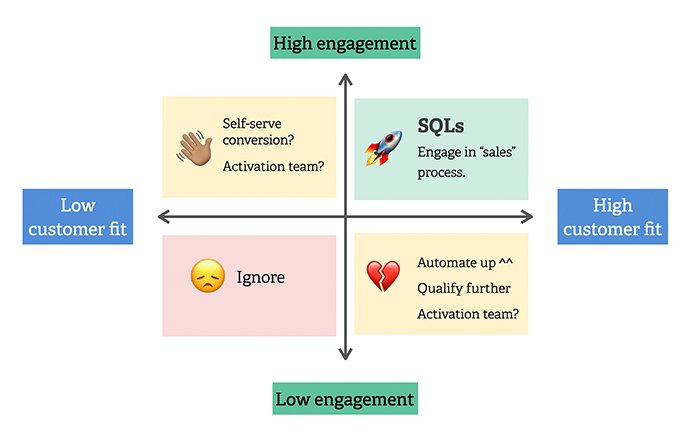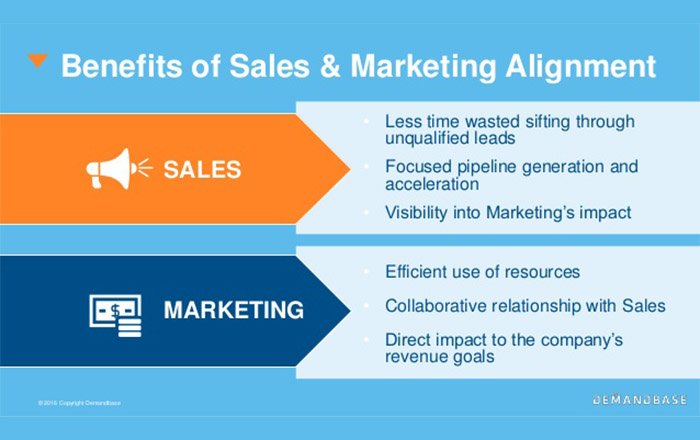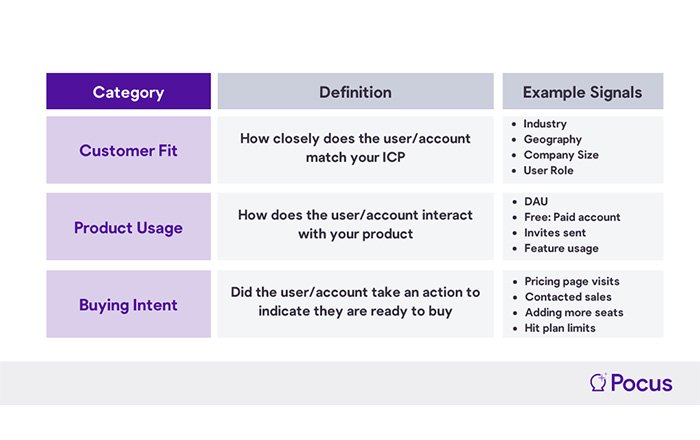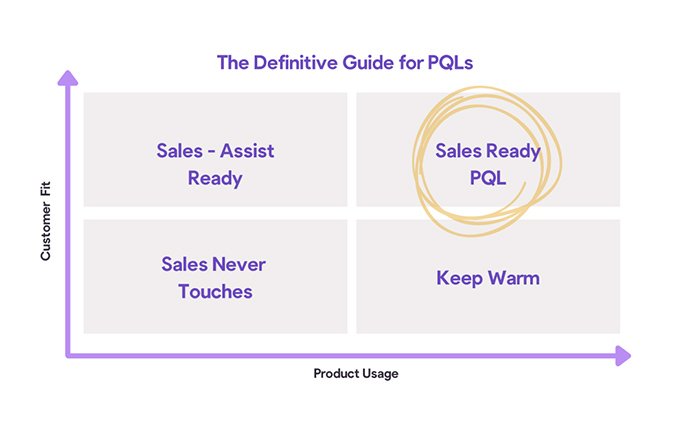Maximizing Revenue with Product-Qualified Leads (PQLs)

The race is on to transition leads into revenue, but achieving this goal requires advanced strategies that drive quality and sustainable growth. Product-Qualified Leads (PQLs) hold a major seat at the larger revenue-driving table, as their qualification criteria heavily depend on actual product engagement – allowing successful brands to separate those most likely to buy from those least likely to convert.
In this guide, we will discuss what makes PQLs unique in comparison with MQLs and SQLs, outline methods for creating an effective PQL framework, detail consistent PQL engagement best practices across teams, suggest lead nurturing techniques for boosting conversions, explain how personalization plays a role with these special types of leads.
And finally, look at metrics used to measure success over time with PQLs and ways to continually iterate strategies in order to refine and optimize the process.
Understanding PQLs

PQLs and their characteristics
Product-Qualified Leads (PQLs) are users in the target audience who have adopted and demonstrated usage of a product or service to an extent that ensures their willingness to invest.
They have progressed enough along with one’s sales funnel that revenue generation through upsells, renewals, subscriptions, or other services becomes actionable. PQLs differ from Marketing-Qualified Leads (MQL) by already actively having explored the offering instead of just displaying intent.
Dropping out is also much less likely once a lead has been identified as having achieved PQL status since they’ve seen tangible value in investing in such products/services.
PQL characteristics usually include engagement rate over the desired timespan, depth of product adoption journey completed, evidence of product plus sales basics understanding – and potentially even proving conversant with alternate solutions & competitors’ offerings.
Differentiating PQLs from Marketing-Qualified Leads (MQLs) and Sales-Qualified Leads (SQLs)
Differentiating PQLs from MQLs and SQLs is essential in order to properly generate revenue through them. MQLs are leads who are prepared for further sales engagement, having already engaged with a marketing initiative and demonstrated interest through their activities. On the other hand, SQLs can be considered ‘hot’ leads – they have qualities that place them nearer to becoming an actual customer, such as exhibiting buying intent or evaluating pieces of high-value content.
Ultimately, however, PQLs stand apart by effectively evaluating whether a lead has enough required product usage knowledge and substantiated consumption patterns thereby qualifying themselves as potential buyers on the basis of product utilization alone. Thus far identifying the substantive product consumers are able to purchase should render maximum return when targeting PQLs.
Benefits of prioritizing PQLs in revenue generation
The benefits of prioritizing PQLs in revenue generation are numerous. Firstly, PQLs have the highest potential for conversion because they have already shown an active interest or familiarity with a product by taking specific qualifying actions in relation to it. Therefore targeting them makes it easier to close such leads compared with marketing-qualified leads (MQLs) or sales-qualified leads (SQLs).
Secondly, engaging and speaking directly to PQL’s particular interests also provides an opportunity for more meaningful conversation between the organization and its end customers which results in greater customer retention levels.
Thirdly, companies that invest resources into building efficient pipelines of Product-Qualified Leads garner reputations as being experts due to their ability to capitalize on emerging trends such as AI automation, Big Data etc. which enables them to make better decisions in terms of product delivery improvements or focus.
Building a PQL Framework

Defining product adoption criteria for PQLs
Defining what qualifies as a PQL depends heavily on the unique needs of each organization. It is important to draw up precise and applicable criteria to accurately define product adoption and term some users as ‘qualified’ leads.
To do so, organizations can use quantitative thresholds based on user engagement levels with their product or services, such as expressing intent via purchase amount, a number of repeat purchases/visitors over time etc; or qualitative measures like displaying knowledge of specific features in conversations with customer service agents.
Identifying key product usage signals
Building a product-qualified lead (PQL) framework involves defining key product adoption criteria, as well as establishing usage signals to identify such leads. To define signals that indicate qualified PQLs, it is important to understand how enterprise customers use the product within their organization.
Typical patterns include trial subscriptions pushed to key members of an organization, frequent upgrades of certain integrations that affect teams from several departments (e.g., HR), and others.
Captured metrics need to also be grouped by relevant user segments such as executives or different corporate roles who could influence decisions concerning related products or services. Through proper identification of satisfactory Product Adoption Criteria & Key Product Usage Signals enterprises can identify less obvious but highly live PQLs in little time.
Establishing a scoring system for PQL qualification
Creating an effective scoring system for PQL qualification is a critical step in turning passive leads into active customers. Quality scores should identify the potential for each lead to hit indicated KPIs and drive revenue.
This requires marketers to fully understand product usage signals, specific features which indicate customer onboarding progress or product fail-safe triggers that may prevent successful adoption on the buyer’s side.
Next, marketers need to accurately weigh each signal based on importance so that accumulatively they create an accurate gauge reflecting the risk of passed leads versus the likelihood of converting new clients.
As such, from implementation onward this rating system should enable predictive forecasting as well as constant optimization optimizing types across stages conversion modes, outcomes reached tools etc.
Effective PQL Engagement

Implementing in-product behavior tracking
Effective PQL engagement helps a company drive revenue by recognizing meaningful engagements with the product.
One thing companies should do is implement in-product behavior tracking, which allows you to monitor the behaviors and activities of customers as they interact with your product more closely than ever, such as examining whether answering onboarding questionnaires or performing specific events.
This data provides extra visibility into what makes PQLs valuable to the business and how best to nurture them for conversion. In addition, companies can understand user journeys better by finding user segmentations in those behaviors that are related exclusively to your product experiences.
Therefore, overall this data can help shape customization strategies for long-term customer success and loyalty.
Leveraging analytics to identify high-value actions
Leveraging analytics to identify high-value actions enables companies to pinpoint which users are engaging with their product, as well as the interactions they’re taking. This helps define and segment customers based on behavior intent, determine progress along the customer journey and measure user engagement through user logs or buying signals.
By digging deeper into details such as page visits and transaction histories, marketers can gain a better understanding of what users want from their product, allowing them to customize experiences for specific PQLsset up automated events for further outreach. Doing so can lead more PQLs down the sale funnel and achieve higher conversion rates in time.
Personalizing user experiences based on PQL insights
Personalizing user experiences based on PQL insights is a powerful means of converting key prospects into paying customers.
Product-Qualified Leads (PQLs) have exhibited certain behaviors or interacted with specific features in products, and by leveraging analytics to monitor them, marketers can determine their purchase readiness status as well as personalization preferences.
The use of marketing automation helps to track user engagement levels in various forms–downloading content, opting for trials, etc.–potentially guiding personalized lead nurturing campaigns or unlocking additional customer experience benefits like priority product updates or customer service options.
Aligning Marketing and Sales

Collaborating on PQL definition and qualification criteria
For marketing and sales teams to effectively work together on PQL qualifications, they must first collaboratively establish a clear definition and measurable criteria.
By breaking down the complex operational silos between departments, organizations can build consensus around what constitutes a qualified lead overall, so both sides align on whom they deem “worthy” of targeted nurturing efforts that would eventually lead to conversions.
Setting common goals and standards for product usage signals also helps clarify evaluation strategies throughout the sales funnel—and determine which actions count most toward successful user experience interactions had been having with the product over time.
Additionally, by actively sharing customer interaction insights across Marketing and Sales—teams avoid duplication of effort due to any discrepancies in lead scoring or definitions amidst multiple groups working pre-and post-sales.
Implementing lead handoff processes between marketing and sales teams
Marketing and sales teams must collaborate effectively with each other to drive high-quality, revenue boosting PQLs. To be successful in this endeavor, a well thought out lead handoff process needs to be implemented.
- Companies should define the channels through which leads will be passed from marketing teams to sales teams
- Establish KPIs for passing data swiftly and accurately
- Create alerts for when leads are ready for handoff
- Automate administrative tasks related to transferring contacts between different platforms as far as possible
- Craft customized follow-up communication templates that trigger once an interested contact credential gets handed off
- Assign responsible team members at both levels who will have practical experience working together towards delivering a seamless signature lead qualification process.
Optimizing sales strategies to cater to PQLs
Optimizing sales strategies to cater to PQLs is paramount for generating the highest possible revenue from existing customers. By understanding customer segmentation and product usage signals within the customer base, sales teams can prioritize more qualified leads.
Awareness and utilization of qualification criteria will be incredibly helpful in terms of marketing’s ability to create trust between themselves and customers faster, ultimately leading into a better sales performance. A
dditionally, aligning customer requirements with company offerings encourages deeper user engagement and allows for increased added value on each lead conversion opportunity. With effective strategizing behind it, catering specifically towards PQLs can generate remarkably better result for a company’s bottom line.
Nurturing PQLs for Conversion

Designing targeted nurturing campaigns for PQLs
In order to drive revenue through product-qualified leads (PQLs), targeted nurturing campaigns should be designed to effectively convert prospects into paying customers.
In addition to providing educational resources and product tutorials, these campaigns must focus on educating users about the actual value of the product or service being offered and why they should choose it over alternatives.
A comprehensive understanding of their particular problem should also be developed, allowing for more customized solutions that speak directly to those problems.
Furthermore, demos and trials can be leveraged in such campaigns – while demos are ideal for presenting a live version of a product, trials enable potential buyers to experience firsthand what using the product/service might be like for them.
Providing educational resources and product tutorials
Nurturing PQLs to optimally convert them into paying customers requires engaging product educational resources and product tutorials.
Content like blog posts and ebooks offer in-depth information about the value proposition of a business’s services or products, helping put things in the right perspective for potential leads.
Accurately planned product tutorials along with live demos should also be made accessible to enhance the chances of customers making an informed decision.
These resources could link up directly from emails as landing pages or links, within promotional content, ads, and other marketing platforms online aiming to ensure those curious are just one click away from being satisfied with quality engagements.
Utilizing product-centric demos and trials
Utilizing product-centric demos and trials is a powerful way to engage Product-Qualified Leads (PQLs) on their journey of conversion to revenue.
By providing free, specialized demo experiences to PQLs, businesses can give potential customers hands-on, customized knowledge of the product or service they are considering purchasing without creating any damage. Demos can be used to regularly inform distinct buyer personas about what the product offers them so that they may better understand how it will meet their needs.
Using a demo and trial approach longer term also allows the marketing team’s messaging strategies and key engagement opportunities to shine throughout real product utilization scenarios prior to a customer actually making a buying decision.
Measuring PQL Success and Iterating

Establishing key performance indicators (KPIs) for PQL revenue generation
An important component of PQL success is having clear and measurable goals. Establishing a set of key performance indicators (KPIs) can help understand how effectively leads are generating revenue and inform further optimization measures for processes involved in producing, marketing, and converting those leads to paying customers.
KPIs should accurately measure the success of all activities along the customer journey, from cold outreach through to product onboarding or activation as well as total revenue generated by PQLs over time.
Additionally, conversion rates between stages can be tracked such as progression from an engaged lead to paying customer with the ratio offering further guidance on what needs to be improved going forward.
Analyzing conversion rates and revenue impact
Once a PQL-focused strategy has been implemented, it is essential to measure its success. To do this, businesses should draw on key performance indicators (KPIs) such as conversion rates linked to Ecommerce and website goals; average customer lifecycle time period; overall revenue resultant from PQLs; upsell revenue achieved from customers who began life as PQLs; repurchase rate of former PQL’s; the ideal starting points for onboarding lead learning paths; among others places.
Metrics like these can provide noteworthy insights into how well the team’s strategies are driving results in terms of sales opportunities linked with conversion funnels or long-term alternatives. Expert analysis of hard data gathered will allow teams to adjust their strategies in an effort to drive more revenue and a better return on investment (ROI).
Continuous optimization and refinement of PQL strategies
Measuring PQL success is essential for iterating upon a successful PQL strategy. Continuously optimizing and refining that strategy will help ensure continued success in driving revenue from product-qualified leads.
This could mean adjusting an existing scoring system, reevaluating segmentation criteria, and analyzing feature use and behavioral data to personalize user experiences.
As customer preferences evolve over time, so too should the optimization of a business’s PQL framework and its implementation given the circumstances: what tactics work for one may not work for all.
That makes it vital to measure successes—and failures—using key performance indicators in order to stay ahead of any changes in customer requirements or market forces going forward.
Conclusion
PQLs are increasingly becoming important pillars of sustained revenue. By holistically understanding PQLs, implementing product adoption criteria, and actively engaging prospects along the buyer journey, organizations can drive profitable growth more efficiently than with traditional sales-focused strategies.
True success in maximizing revenue from PQLs requires equal cooperation from marketing and sales teams for efficient lead handoff processes and joint efforts to nurture leads toward conversion.
With this comprehensive guide on PQL-driven revenue strategies now available, now is the perfect time for executives, marketers, and business development professionals alike to optimize their methods for generating sustainable conversions through product-qualified leads.
- Contrasting Mobile and Web App Onboarding: Variances, Effective Strategies - September 19, 2023
- 5 Key UX Principles for Enhancing Product Adoption - September 5, 2023
- Flywheel vs. Funnel: Choosing the Ideal Model for Your Business - August 22, 2023

